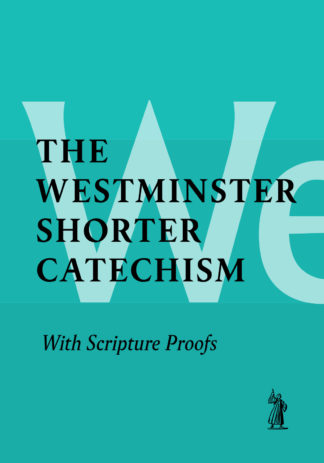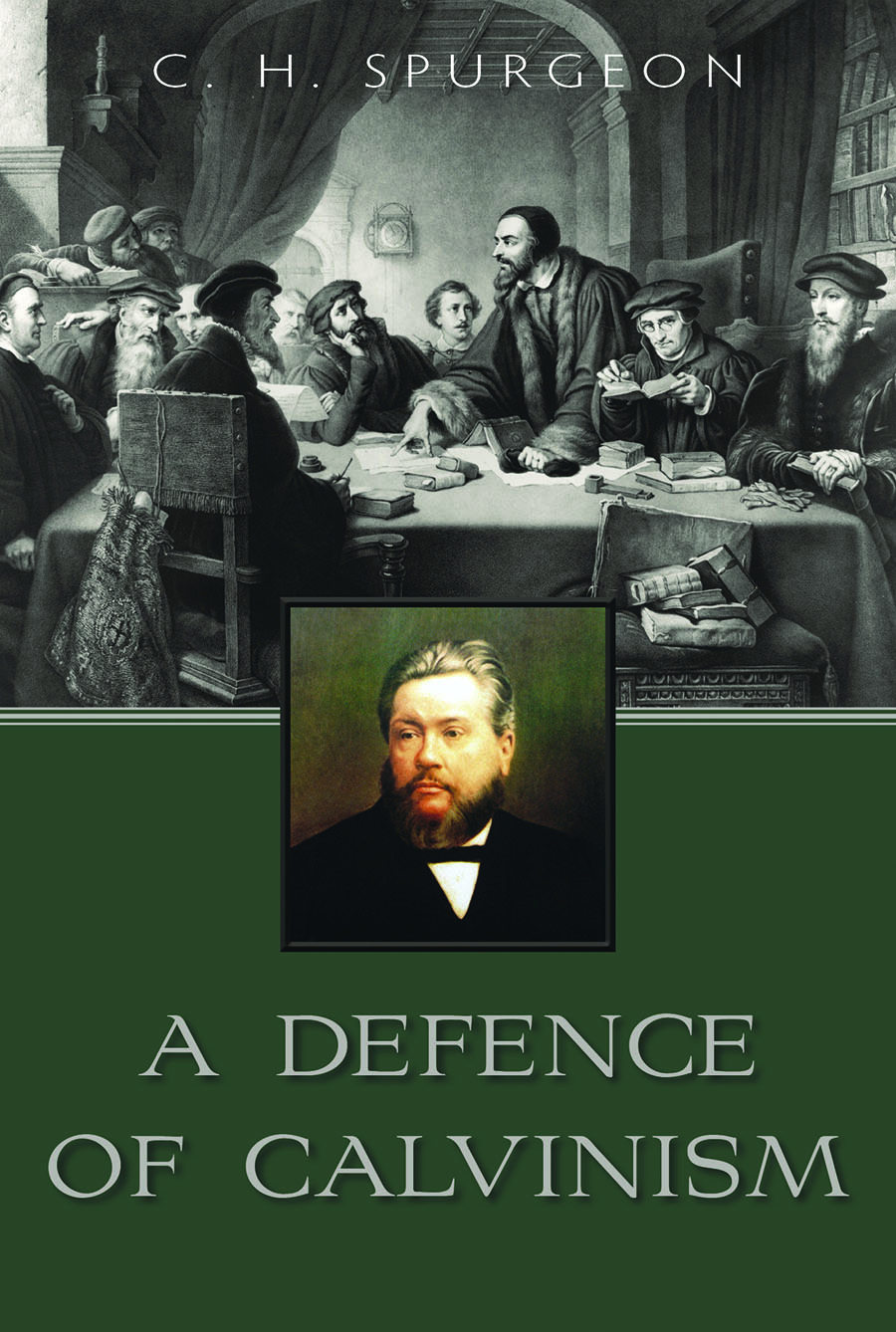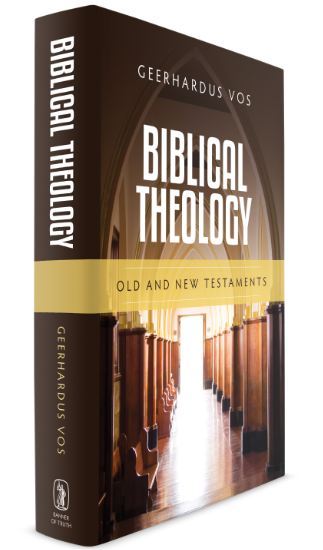Biblical Theology
Old & New Testaments
| Weight | 0.63 kg |
|---|---|
| Dimensions | 22.3 × 14.3 × 3.2 cm |
| ISBN | 9781848714328 |
| format | Book |
| page-count | 440 |
| Original Pub Date | 1948 |
| Banner Pub Date | Mar 1, 1975 |
| topic | Biblical Theology |
| Binding | Cloth-bound, eBook (ePub & Kindle), Cloth-bound & eBook (ePub & Kindle) |
| scripture | Whole Bible |
Book Description
The aim of this book is no less than to provide an account of the unfolding of the mind of God in history, through the successive agents of his special revelation. Vos handles this under three main divisions: the Mosaic epoch of revelation, the prophetic epoch of revelation, and the New Testament.
Such an historical approach is not meant to supplant the work of the systematic theologian; nevertheless, the Christian gospel is inextricably bound up with history, and the biblical theologian thus seeks to highlight the uniqueness of each biblical document in that succession. The rich variety of Scripture is discovered anew as the progressive development of biblical themes is explicated.
To read these pages- the fruit of Vos’s 39 years of teaching biblical theology at Princeton- is to appreciate the late John Murray’s suggestion that Geerhardus Vos was the most incisive exegete in the English-speaking world of the twentieth century.
Table of Contents Expand ↓
| Page | ||
| The Old Testament | ||
| PART ONE | ||
| THE MOSAIC EPOCH OF REVELATION | ||
| 1 | INTRODUCTION: THE NATURE AND METHOD OF BIBLICAL THEOLOGY | 3 |
| Division of Theology into four great departments – definition of Biblical Theology – the various things successively designated by the name of Biblical Theology – guiding principles – objections to the name ‘Biblical Theology’ – the relation of Biblical Theology to other disciplines – the method of Biblical Theology – practical uses of the study of Biblical Theology | ||
| 2 | THE MAPPING OUT OF THE FIELD OF REDEMPTION | 19 |
| Pre-redemptive and Redemptive Special Revelation – the division of Redemptive Special Revelation – ‘Diatheke’ | ||
| 3 | THE CONTENT OF PRE-REDEMPTIVE SPECIAL REVELATION | 27 |
| Four principles: life, probation, temptation, death – mortality and immortality | ||
| 4 | THE CONTENT OF THE FIRST REDEMPTIVE SPECIAL REVELATION | 41 |
| The three curses – ‘seed’ – human suffering | ||
| 5 | THE NOACHIAN REVELATION AND THE DEVELOPMENT LEADING UP TO IT | 45 |
| Cainites and Sethites – Revelation after the Flood | ||
| 6 | THE PERIOD BETWEEN NOAH AND THE GREAT PATRIARCHS | 56 |
| The prophetic deliverances of Noah – the table of the nations – the division of tongues – the election of the Shemites to furnish the bearers of redemption and revelation | ||
| 7 | REVELATION IN THE PATRIARCHAL PERIOD | 66 |
| Critical views – the historicity of the patriarchs – theophanies – the Angel of Jehovah – the Patriarch Abraham – the principle of election – the objectivity of the gifts bestowed – the promises fulfilled supernaturally – the divine name ‘El-Shaddai’ – faith as found in patriarchal religion – ethical elements – the Patriarch Isaac – the Patriarch Jacob – election – the Bethel dream-vision – the wrestling at Peniel | ||
| 8 | REVELATION IN THE PERIOD OF MOSES | 100 |
| [A] The Place of Moses in the Organism of Old Testament Revelation | 100 | |
| The prominence of Moses | ||
| [B] The Form of Revelation in the Mosaic Period | 105 | |
| The pillar of cloud and fire – the Angel of Jehovah – the name and the face of Jehovah | ||
| [C] The Content of the Mosaic Revelation | 109 | |
| [1] The factual basis. Deliverance from foreign bondage – deliverance from sin – a display of divine omnipotence – a demonstration of sovereign grace – the name ‘Jehovah’ – the Passover | 109 | |
| [2] The Berith made between Jehovah and Israel | 121 | |
| [3] The organization of Israel: the theocracy. The function of law | 124 | |
| [4] The Decalogue. Of world-wide application – religious in character – the Ten Words – the First Word – the Second Word – the Third Word – the Fourth Word | 129 | |
| [5] The Ritual (ceremonial) Law. Symbol and Type – the Tabernacle – the majesty and holiness of God – the place of worship – Christ is the anti-typical Tabernacle – the sacrificial system of the law – offerings, gifts, sacrifices – the relation between the offerer and his sacrifice – the stages of the sacrificial ritual – vicariousness defined – the meaning of ‘covering’ – the variety of offerings – uncleanness and purification – totemism – ancestor-worship – the animistic theory | 143 | |
| PART TWO | ||
| THE PROPHETIC EPOCH OF REVELATION | ||
| 1 | THE PLACE OF PROPHETISM IN OLD TESTAMENT REVELATION | 185 |
| A kingdom-producing movement – the word as the instrument of prophetism – a factor of continuity – two main periods of prophetism | ||
| 2 | THE CONCEPTION OF A PROPHET: NAMES AND ETYMOLOGIES | 191 |
| The Hebrew term nabhi – the Greek term prophetes – the terms ro’eh and chozeh | ||
| 3 | THE HISTORY OF PROPHETISM: CRITICAL THEORIES | 198 |
| The History of prophetism – the origin of ‘nabhi’-ism’ in Israel, arguments and counter-arguments – did the later prophets create ethical monotheism? | ||
| 4 | THE MODE OF RECEPTION OF THE PROPHETIC REVELATION | 212 |
| The views of Kuenen explained – ‘kernel-revelation’ – the ‘divination’ theory – revelation through speech and hearing – revelation through showing and seeing – revelation through rapture – bodily effects – the intra-mental state – extreme critical views answered | ||
| 5 | THE MODE OF COMMUNICATION OF THE PROPHECY | 230 |
| Speech – miracles | ||
| 6 | THE CONTENT OF THE PROPHETIC REVELATION | 234 |
| [A] The Nature and Attributes of Jehovah | 234 | |
| Monotheism – the nature and attributes of Jehovah – omnipotence – ‘Jehovah of hosts’ – Jehovah’s relation to time and space – omniscience – holiness – righteousness – emotions and affections | ||
| [B] The Bond between Jehovah and Israel | 256 | |
| [C] The Rupture of the Bond: The Sin of Israel | 263 | |
| Collective national sin – the corruption of ritual worship – Amos 5.25 – Isaiah 1.10-17 – Hosea 6.6 – Micah 6.6-9 – Amos 4.4 – Jeremiah 7.21-23 – social sin – Hosea’s doctrine of sin – Isaiah’s doctrine of sin – Israel’s sin as viewed by the prophets historically | ||
| [D] The Judgment and the Restoration: Prophetic Eschatology | 286 | |
| The views of the Wellhausen school of criticism – the eschatological teaching of the prophets – Hosea – Isaiah – the ‘latter days’ in Hosea – the ‘future glory’ in Isaiah | ||
| The New Testament | ||
| 1 | THE STRUCTURE OF NEW TESTAMENT REVELATION | 299 |
| [1] From indications in the Old Testament | ||
| [2] From the teachings of Jesus | ||
| [3] From the teachings of Paul and the other apostles | ||
| The new dispensation is final – is a further revelation to be expected? | ||
| 2 | REVELATION CONNECTED WITH THE NATIVITY | 305 |
| Aspects of the Nativity | ||
| 3 | REVELATION CONNECTED WITH JOHN THE BAPTIST | 311 |
| Matthew 11.2-19 – John the Baptist and Elijah – John the Baptist’s testimony to Jesus – John’s baptism – the baptism of Jesus by John – the descent of the Spirit on Jesus – the post-baptismal testimony of the Baptist to Jesus – John 1.15, 30 – John 1.29, 36 – John 1.34 – John 3.27-36 | ||
| 4 | REVELATION IN THE PROBATION OF JESUS | 330 |
| The temptation in the wilderness – the Lord’s temptation and our own – the specific form assumed by our Lord’s temptation – the Lord’s temptations interpreted – Deuteronomy 8.3 – Deuteronomy 6.16 – Deuteronomy 6.13 – temptability and peccability | ||
| 5 | THE REVELATION OF JESUS’ PUBLIC MINISTRY | 343 |
| [A] The Various Aspects of Christ’s Revealing Function | 343 | |
| Four divisions of revelation by Christ – Jesus’ revealing work in the Gospels | ||
| [B] The Question of Development | 348 | |
| [C] The Method of Jesus’ Teaching | 350 | |
| Similitudes – parables proper – specialization-parables – the ‘allegorical’ method – the philosophy of the parabolic teaching – ‘time’ and ‘truth’ in the Fourth Gospel | ||
| [D] Jesus’ Attitude Toward the Scriptures of the Old Testament | 357 | |
| A ‘religion of the Book’ – certain critical claims disproved | ||
| [E] Jesus’ Doctrine of God | 363 | |
| Jesus’ teaching on the divine Fatherhood – Jesus’ stress on the divine majesty and greatness – the retributive righteousness of God | ||
| [F] Jesus’ Teaching on the Kingdom of God | 372 | |
| [1] The formal questions. The kingdom in the Old Testament – the kingdom in the Gospels – ‘the kingdom of Heaven’ – modern theories of ‘the kingdom’ – the two-sided conception of the kingdom | 372 | |
| [2] The essence of the kingdom. Divine supremacy in the sphere of power – faith as related to the kingdom’s power – ‘faith’ as used in John – divine supremacy in the sphere of righteousness – our Lord’s critique of Jewish ethics – repentance – divine supremacy in the sphere of blessedness – kingdom and church | 385 | |
| INDEX: SUBJECTS AND NAMES | 403 | |
| SCRIPTURE REFERENCES | 417 |
Review
More items to consider:

Shorter Catechism
With Scripture Proofs
Description
The ripe fruit of the 39 years which Vos spent teaching Biblical Theology at Princeton. 436pp.

Description
The ripe fruit of the 39 years which Vos spent teaching Biblical Theology at Princeton. 436pp.





Vaclav Vasil –
This book was my first introduction to Biblical Theology when I entered Toronto Baptist Seminary. I learned a lot about how God promises the redemption in Christ in OT and fulfills it in the NT. It’s well written and will be a rewarding read for anyone who takes the time with this not so short book. I have good memories of learning from it under the wise teaching of the late Dr. Geof Adams.
Stephen Otto –
A challenging volume for the layperson, but this obstacle can now be ameliorated significantly by reading along with Vos Group hosted by Reformed Forum. This work will help to “fill in the gaps” of any prior theological training previously received by the typical layperson, will feed an interest and appetite in God’s Word, and will ultimately aid in maturing the lay reader to productivity in the church.